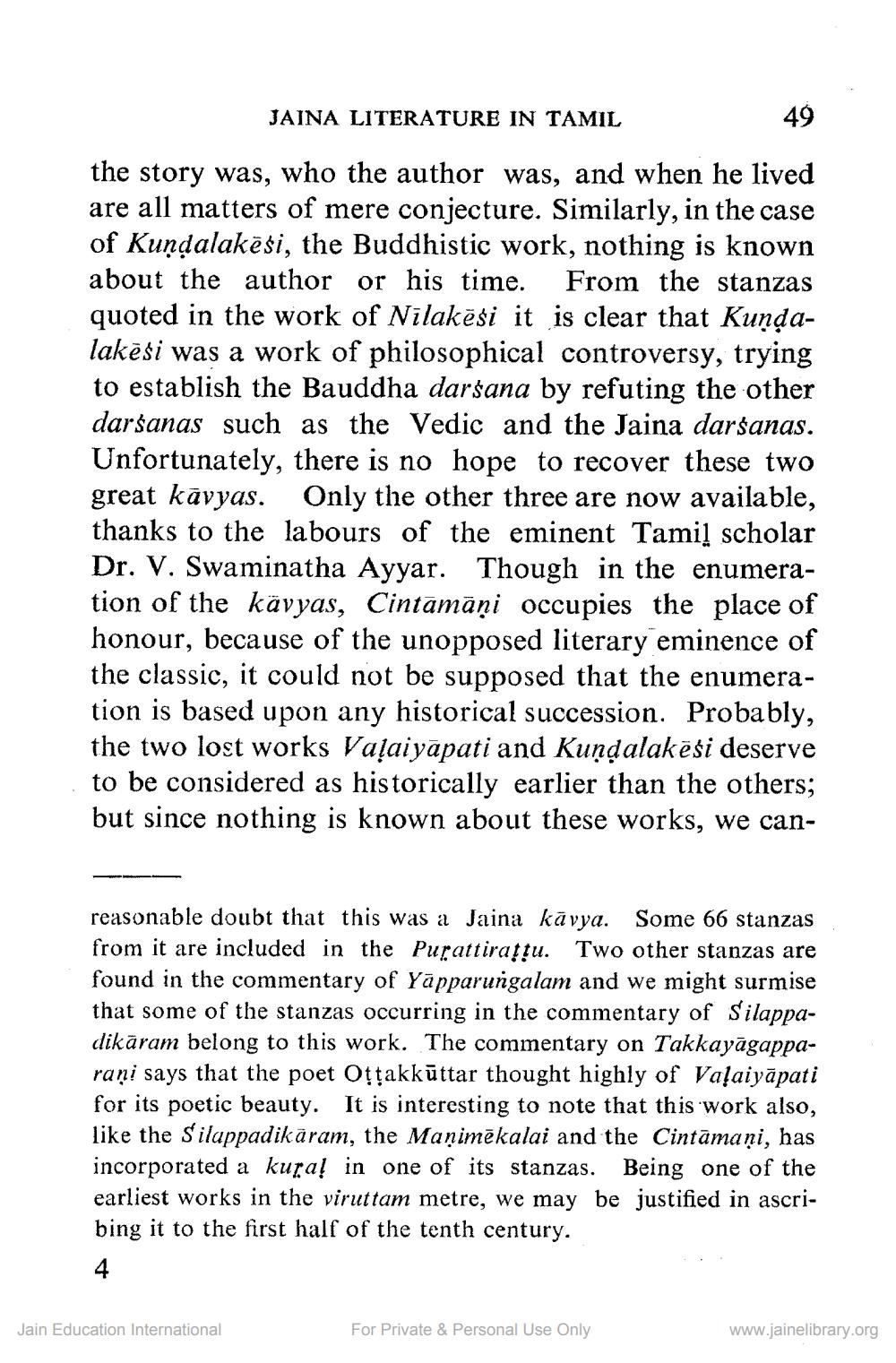________________
JAINA LITERATURE IN TAMIL
49
the story was, who the author was, and when he lived are all matters of mere conjecture. Similarly, in the case of Kuņdalakësi, the Buddhistic work, nothing is known about the author or his time. From the stanzas quoted in the work of Nilakësi it is clear that Kundalakēģi was a work of philosophical controversy, trying to establish the Bauddha darsana by refuting the other darśanas such as the Vedic and the Jaina darśanas. Unfortunately, there is no hope to recover these two great kāvyas. Only the other three are now available, thanks to the labours of the eminent Tamil scholar Dr. V. Swaminatha Ayyar. Though in the enumeration of the kävyas, Cintamāṇi occupies the place of honour, because of the unopposed literary eminence of the classic, it could not be supposed that the enumeration is based upon any historical succession. Probably, the two lost works Vaļaiyāpati and Kundalakësi deserve to be considered as historically earlier than the others; but since nothing is known about these works, we can
reasonable doubt that this was a Jaina kā vya. Some 66 stanzas from it are included in the Purattiraļļu. Two other stanzas are found in the commentary of Yāpparungalam and we might surmise that some of the stanzas occurring in the commentary of Silappadikāram belong to this work. The commentary on Takkayāgapparani says that the poet Oịtakkūttar thought highly of Vaļaiyāpati for its poetic beauty. It is interesting to note that this work also, like the S'ilappadikāram, the Maạimēkalai and the Cintamani, has incorp
its stanzas. Being one of the earliest works in the viruttam metre, we may be justified in ascribing it to the first half of the tenth century.
Jain Education International
For Private & Personal Use Only
www.jainelibrary.org




